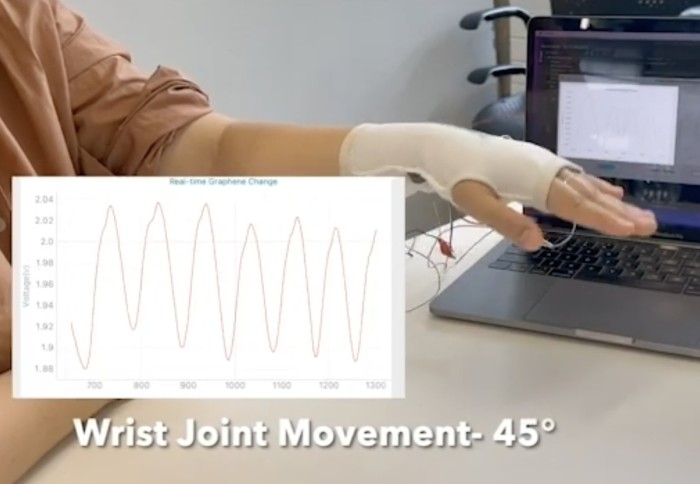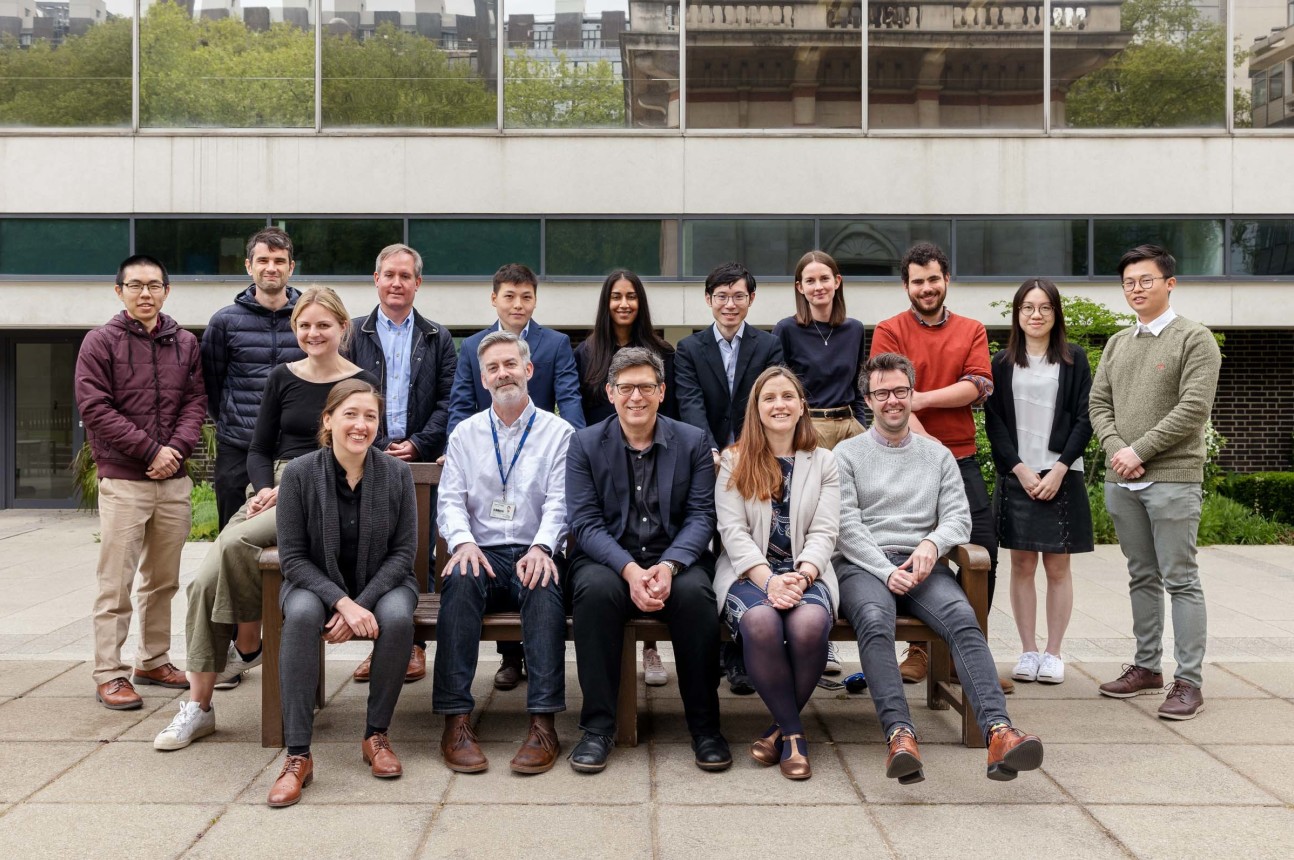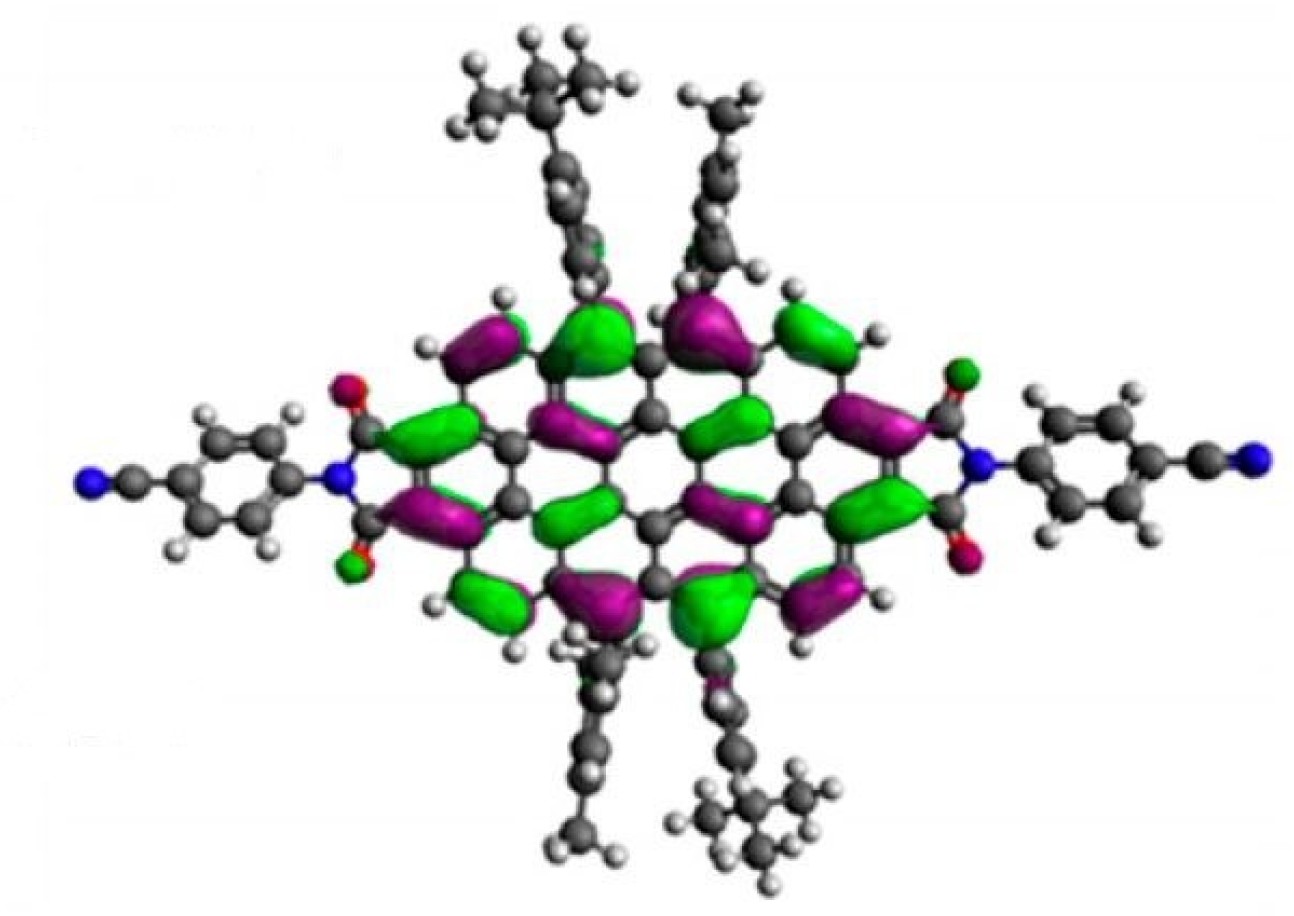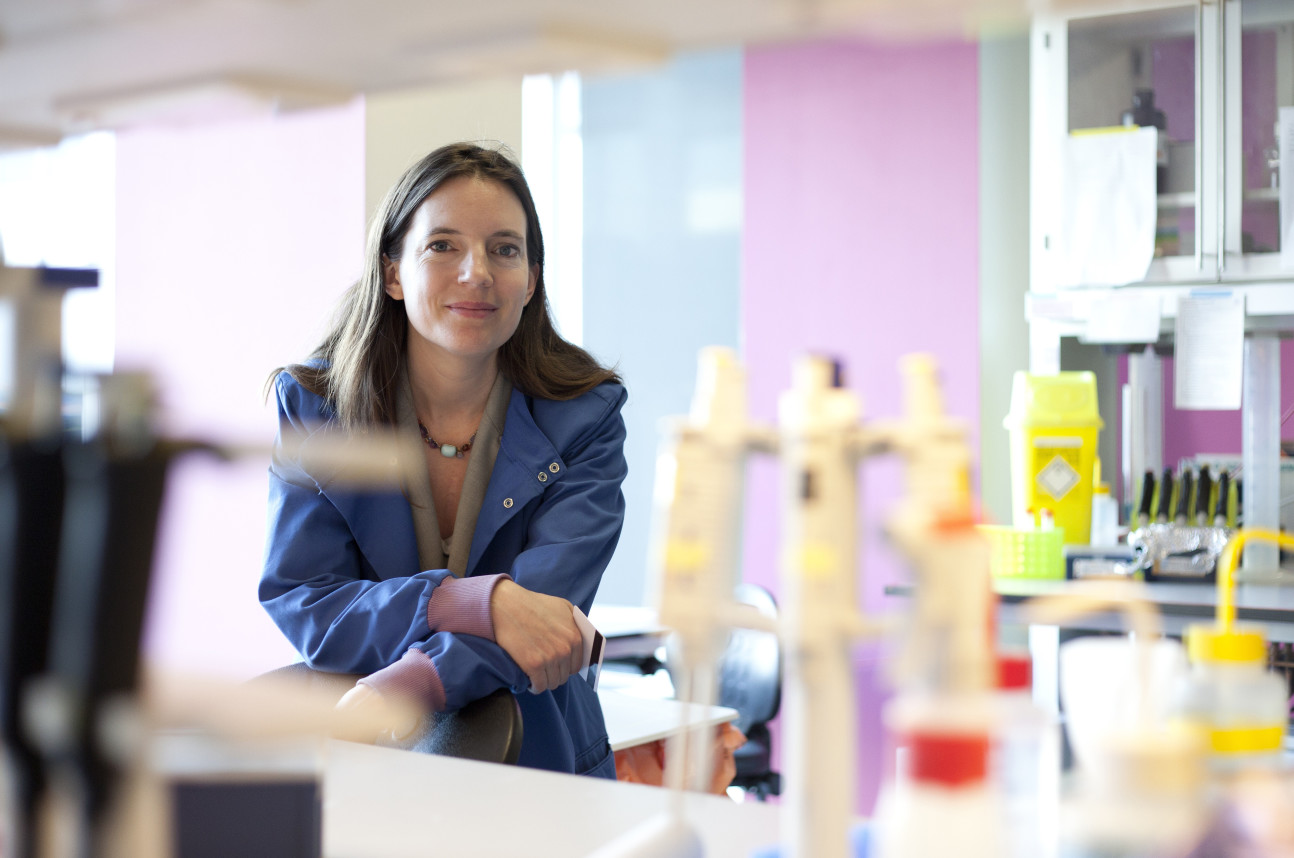Flexible movement sensors and bacterial toxins: News from the College

Here’s a batch of fresh news and announcements from across Imperial.
From flexible clothing sensors that detect body movement, to a newly-discovered toxin that can kill bacteria, here is some quick-read news from across the College.
Flexible movement sensors
Imperial researchers have developed flexible clothing sensors that can detect body movement, with potential applications in injury rehabilitation, human-computer interaction systems, and athletic training.
The researchers produced a new type of graphene-based TPU/textile composite sensor using small-scale manufacturing techniques such as laser cutting, film coating, and thermal transfer.
They found that when integrated into clothing, the sensors were able to detect a wide range of human body motions accurately, as well as subtle physiological signals.
Lead author Joy Zhou, PhD candidate at the Dyson School of Design Engineering, said: “Graphene has traditionally been too fragile to incorporate into clothing sensors, but our new technique makes them much more robust. Our sensors exhibit great potential for wearable monitoring devices.”
Read more about the study in Polymers for Advanced Technologies.
Bhattacharyya nomination
 Imperial’s Transport Strategy Centre (TSC) has been nominated for the Royal Academy of Engineering’s Bhattacharyya Award – a £25k prize that celebrates collaboration between academia and industry.
Imperial’s Transport Strategy Centre (TSC) has been nominated for the Royal Academy of Engineering’s Bhattacharyya Award – a £25k prize that celebrates collaboration between academia and industry.
Established 30 years ago to support the railway industry, the TSC’s research has driven more than £1.5 billion worth of benefits to transport industries over the last 15 years. Working with more than 120 transport operators in the UK and worldwide including London Underground and the Newcastle Metro, TSC’s research impacts both operators and passengers. Its research has led to better productivity, cost savings on asset renewal, and sustainable fares and funding policies across transport networks in London, Newcastle, North America and South East Asia.
TSC Co-Directors Richard Anderson and Professor Daniel Graham said: “We are delighted to be nominated for the Bhattacharyya Award. To deliver impact we disseminate, share, and organise our entire research programme in continuous close collaboration with our industry partners. This ensures that our findings can be embedded within industry processes, practises, and policies, ultimately leading to impact.”
The winner of the Award will be announced on 29 September.
Single-molecule electronics
 A phenomenon first described theoretically in 2006 has now been confirmed by experiments. The phenomenon concerns electrical rectification – the changing of an electrical current from alternating to direct – in wet single-molecule systems.
A phenomenon first described theoretically in 2006 has now been confirmed by experiments. The phenomenon concerns electrical rectification – the changing of an electrical current from alternating to direct – in wet single-molecule systems.
Researchers studied electrical current passing between electrodes suspended in an electrolytic solution via a single molecule. Previous systems that have induced rectification in the current have used asymmetric molecular structures or structural asymmetry of the enclosing electrodes, but this system uses structurally symmetrical molecules, allowing the team to study the influence of different molecules on the current.
The team say that as well as providing new insights into high-resolution condensed matter molecular conductivity, their findings open the door to functional design of new single-molecule devices, including tunnelling imaging and spectroscopy.
Professor Alexei Kornyshev, from Imperial’s Department of Chemistry, said: “This work involved the active participation of 12 scientists from nine universities and research institutions of five countries – China, USA, Germany, Denmark, and UK – with complementary knowledge, from single-molecule nanoscience to quantum chemistry and theoretical and experimental chemical physics.
“In times when the world threatens to crack due to conflicts of ‘national interests’ and ideologies, to me this is an ideal example of the direction in which we should tend to go and of the values that could unite us.”
Read the full paper in Proceedings of the National Academy of Sciences.
National Gallery re-appointment
 Professor Molly Stevens is among three Trustees who have been re-appointed by the Prime Minister to the National Gallery. Professor Stevens, of the Departments of Materials and Bioengineering at Imperial, will commence her new four-year term on 1 April 2023.
Professor Molly Stevens is among three Trustees who have been re-appointed by the Prime Minister to the National Gallery. Professor Stevens, of the Departments of Materials and Bioengineering at Imperial, will commence her new four-year term on 1 April 2023.
Professor Stevens is Fellow of the Royal Society, a Fellow of the Royal Academy of Engineering and a Foreign Member of the US National Academy of Engineering. She is currently the Director of the UK Regenerative Medicine Platform focussed on smart materials. Her internationally recognised research has received over twenty awards, including the EU40 Award for best materials scientist under 40 in Europe and the 2017 Harrison Medal from the Royal Pharmaceutical Society of Great Britain.
Molly is a serial entrepreneur and founder of several companies in the diagnostics and therapeutics space.
Bacterial toxins

A team led by McMaster University (Canada) and including Imperial researchers has discovered a previously unknown bacteria-killing toxin that could pave the way for a new generation of antibiotics.
The study shows that the bacterial pathogen, Pseudomonas aeruginosa, known to cause hospital-acquired infections such as pneumonia, secretes a toxin that has evolved to kill other species of bacteria. The toxin targets essential RNA molecules of other bacteria, effectively rendering them non-functional.
This mechanism of the toxin is different to protein-targeting toxins secreted by other bacteria, such as those that cause cholera and diphtheria. The team say that this development holds great potential for future research that could eventually lead to new innovations that combat infection-causing bacteria.
The Imperial work was led by Professor Alain Filloux and PhD student Marta Rudzite. Professor Filloux said: “Discovering new toxins that bacteria fire at each other is paving the way to develop innovative antimicrobial strategies. Understanding their mechanism tells us how to develop drugs mimicking their action so that the antibiotic pipeline can be replenished in the years to come.”
Read the full paper in Molecular Cell. Want to be kept up to date on news at Imperial? Sign up for our free quick-read daily e-newsletter, Imperial Today.
Want to be kept up to date on news at Imperial? Sign up for our free quick-read daily e-newsletter, Imperial Today.
Article text (excluding photos or graphics) © Imperial College London.
Photos and graphics subject to third party copyright used with permission or © Imperial College London.
Reporter
Hayley Dunning
Communications Division
Caroline Brogan
Communications Division
